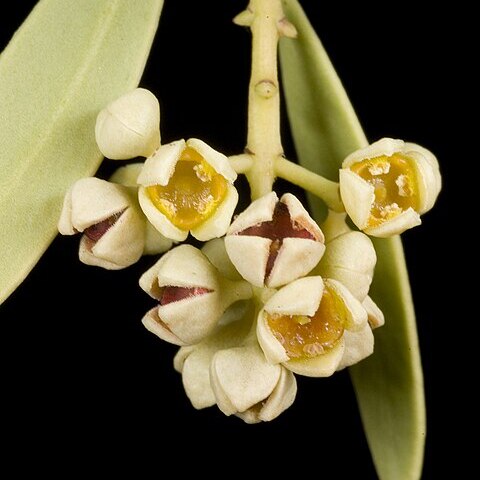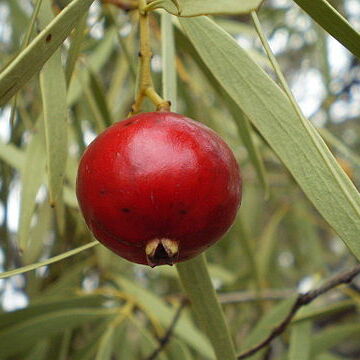A small tree. It has an upright growth habit. It grows to 5-8 m high. It forms clumps in dunes due to underground suckers. The leaves are yellowish-green. They are leathery and slightly sickle shaped. The fruit are attractive, round and succulent. They turn bright red when ripe. They have a red outer skin surrounding a hard outer kernel which can be cracked open to reveal a nut. The nuts are edible. The fruit are 2-4 cm across. They have a single seed.



